Burrata Pasta with Roasted Tomatoes
This gourmet Burrata Pasta with roasted tomatoes is the perfect easy summer pasta dish that has restaurant-quality flavors! The creamy burrata makes the ultimate silky sauce that always has everyone coming back for seconds!
What I love most about this pasta is how the oven does all the work—no chopping, no stovetop mess, no fuss. The tomatoes roast into a sweet, jammy sauce while I sit on the patio with a glass of wine.
It’s the kind of pasta I crave in summer, but I make it year-round because roasting brings out so much flavor—even when tomatoes aren’t in season. Topped with creamy burrata, it feels like something you’d order at a restaurant, but it couldn’t be easier to make at home.
If you love simple pasta dishes like this, you might also enjoy my Creamy Smoked Salmon Pasta or Pasta e Piselli, or browse all of my pasta recipes here.
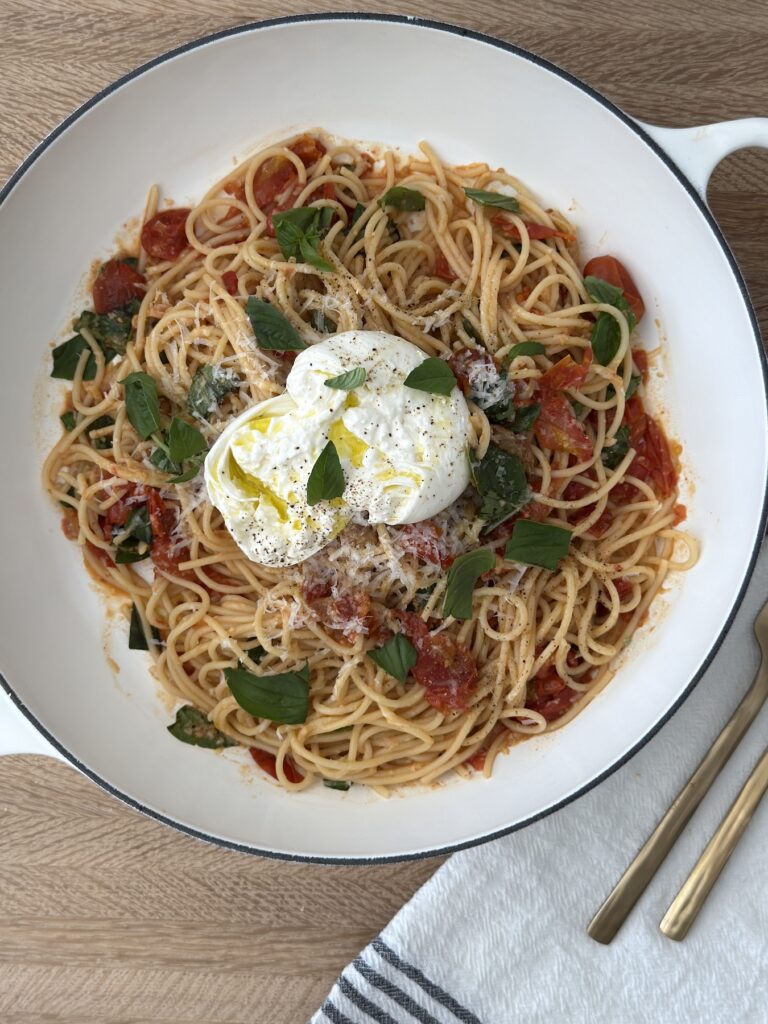
Table of Contents
Why You’ll Love This Burrata Pasta
- Gourmet pasta dish right at home. Creamy burrata and jammy tomatoes come together for a silky, rich pasta dish your whole family will love.
- Only 6 ingredients. Only 6 simple ingredients create a luxurious pasta dish.
- The oven does the work. Slow-roasting the tomatoes builds all the flavor and makes a rich, flavorful sauce.
- Great year-round. Even though tomatoes are best in summer, roasting them brings out so much flavor that you can enjoy this dish any time of year.
What’s the Difference Between Burrata and Mozzarella?
Burrata and mozzarella may look similar on the outside, but they’re very different on the inside. While mozzarella is firm and springy, burrata has a soft, creamy center filled with stracciatella (shreds of mozzarella soaked in cream). When you cut into a ball of burrata, its creamy inside makes it perfect for melting into warm pasta.
Ingredients
- Cherry tomatoes or grape tomatoes — Use whichever looks ripest and sweetest; both roast beautifully.
- Extra virgin olive oil — Adds richness and helps the tomatoes caramelize in the oven.
- Whole garlic cloves, smashed — Roasts into a sweet, mellow flavor that deepens the sauce.
- Salt — Essential for seasoning both the tomatoes and the pasta water.
- Freshly cracked black pepper — Adds a subtle bite and balances the sweetness of the tomatoes.
- Spaghetti (or any short or long pasta) — Spaghetti works beautifully, but any pasta shape you love will pair well with the sauce.
- Freshly grated Parmesan cheese — Adds salty, nutty depth and helps bind the sauce.
- Burrata cheese — The creamy centerpiece of the dish, added just before serving for a silky finish.
- Fresh basil leaves — Brightens the dish with freshness and a pop of color.
- Optional: pinch of red pepper flakes — For a gentle kick of heat if desired.
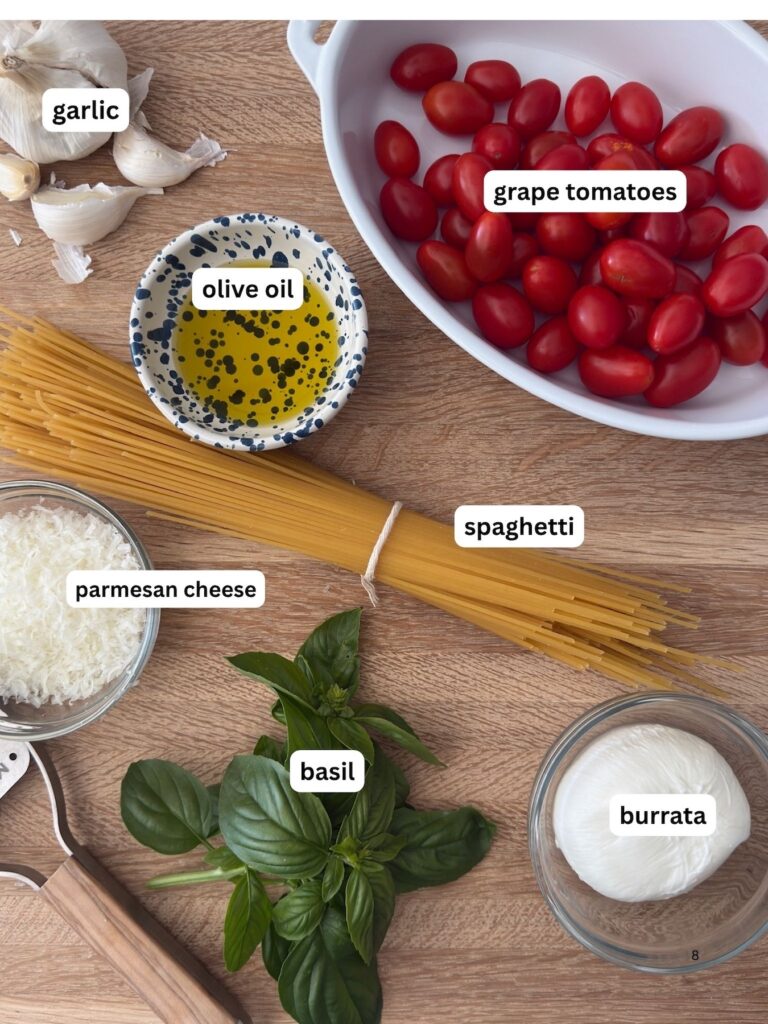
How to Make Burrata Pasta with Roasted Tomatoes
- Preheat oven to 350°F.
- Roast the tomatoes. Place cherry tomatoes in a roasting pan. Add olive oil, smashed garlic cloves, salt, and pepper. Toss to coat, then nestle the garlic cloves underneath the tomatoes to avoid burning.
- Bake for 40–45 minutes or until the tomatoes are blistered and jammy. The garlic should be golden and soft.
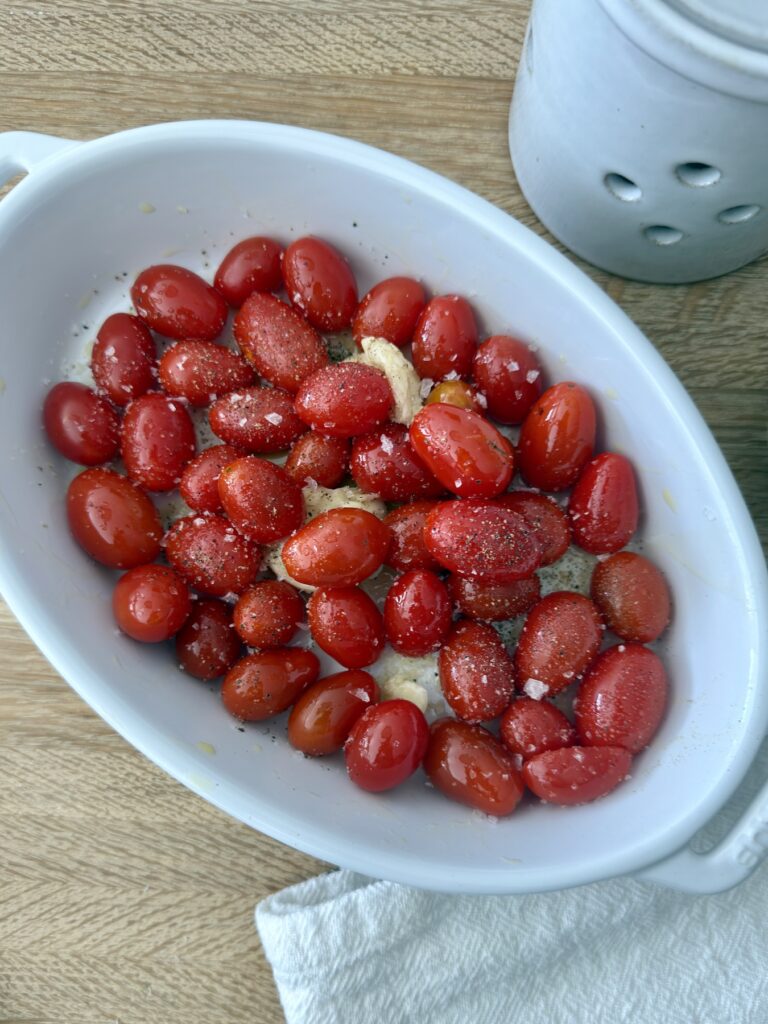
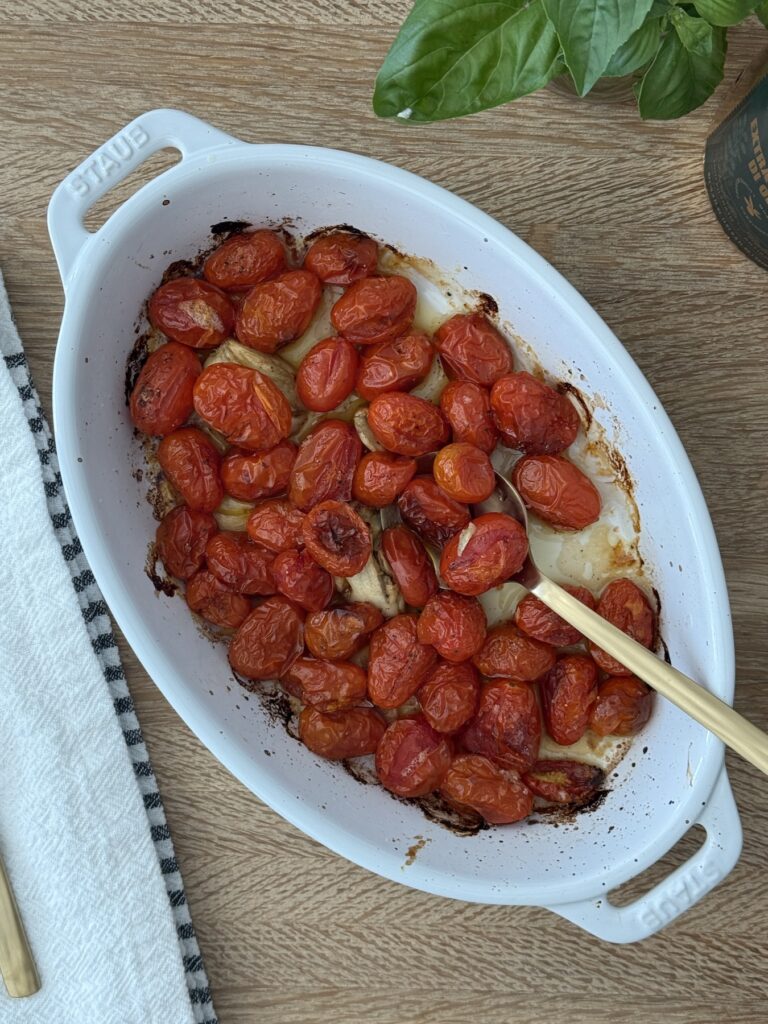
- Boil the pasta. Cook in salted boiling water until al dente. Reserve ½ cup pasta water, then drain.
- Smash and stir. Let the tomatoes cool slightly. Use the back of a fork to gently smash the garlic and tomatoes into a sauce.
- Toss with pasta. Combine the tomato mixture (including the oil) with the pasta. Add grated Parmesan and stir to coat. Add reserved pasta water if needed to loosen the sauce.
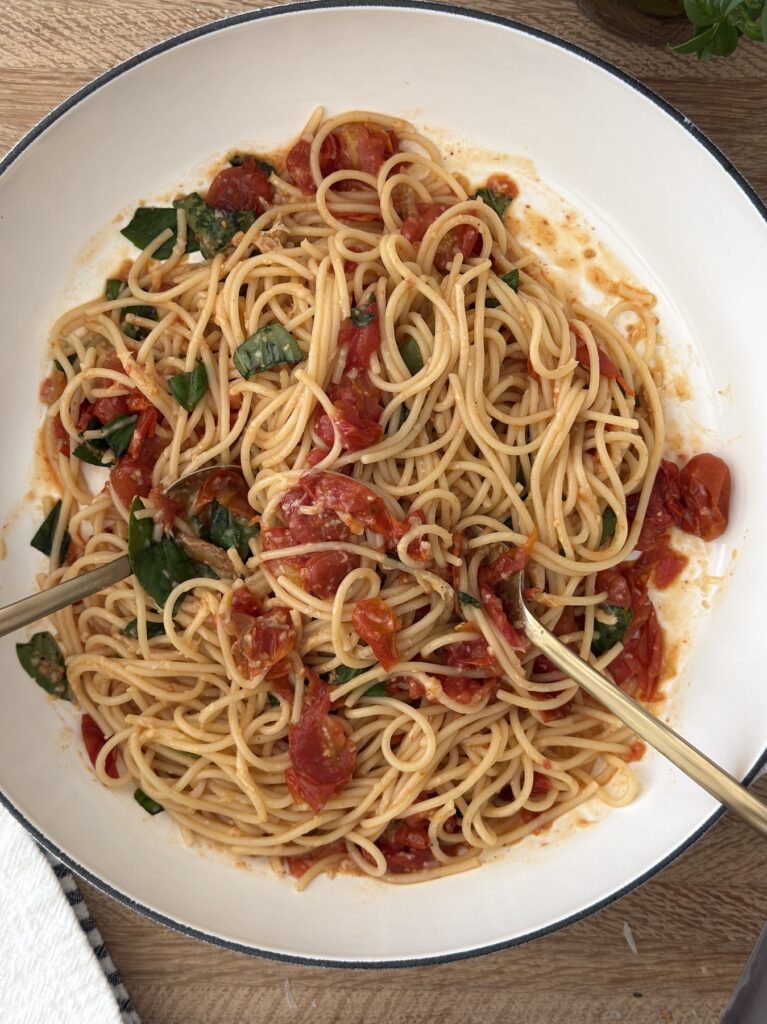
- Top and serve. Plate the pasta and top with torn burrata. Finish with torn basil, a drizzle of olive oil, and freshly cracked black pepper.
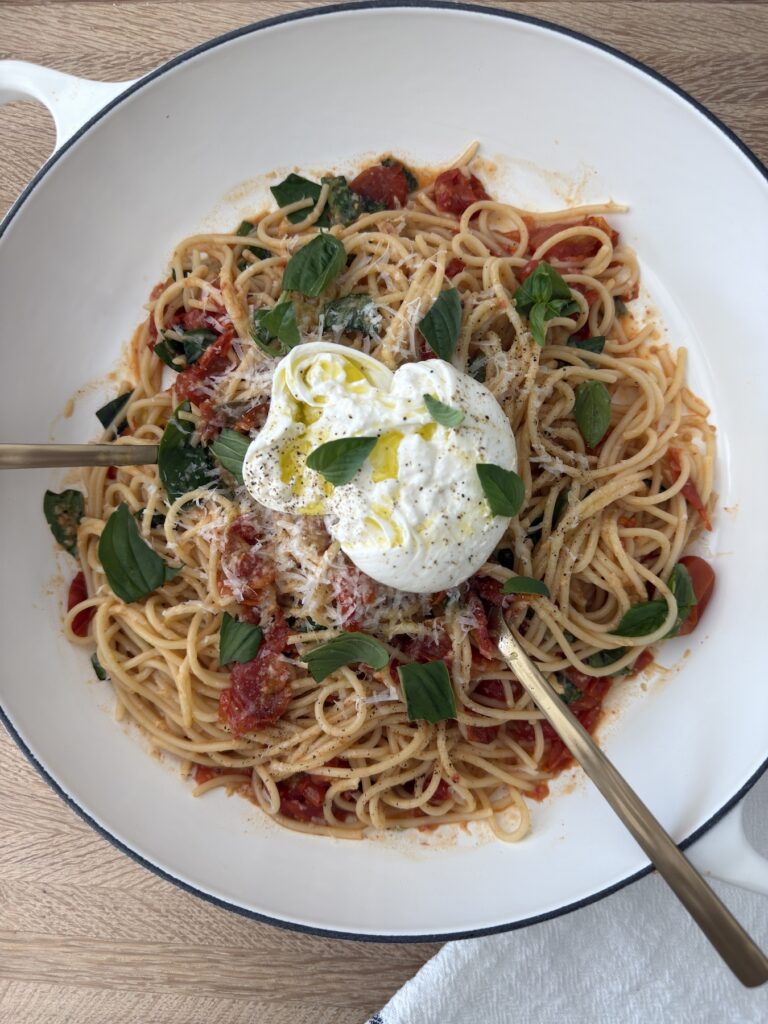
Substitutions and Variations
- Swap the burrata. Substitute with fresh mozzarella or mozzarella pearls. It won’t be as creamy but still delicious.
- Spice it up. Add Calabrian chili paste or crushed red pepper flakes for a little heat.
- Add more fresh herbs. Try thyme, parsley, or oregano to change up the flavor.
- Make it gluten-free. Just use your favorite gluten-free pasta.
Expert Tips
- Roast the tomatoes until blistered. The tomatoes should be blistered and starting to caramelize for that jammy, rich flavor.
- Drain your burrata. Let burrata sit on a paper towel for 10–15 minutes before using to remove excess moisture.
- Add burrata last. Only top the pasta right before serving so it melts slightly without losing its texture.
- Tuck your garlic. Nestling the garlic under the tomatoes prevents burning and allows it to soften slowly.
- Reserve pasta water. It helps loosen and emulsify the sauce if needed.
Storage and Freezing
This pasta is best enjoyed fresh, but leftovers still taste great the next day. Store any extras in an airtight container in the refrigerator for up to 2 days.
To reheat, warm gently on the stove or in the microwave, adding a splash of water or olive oil to loosen the sauce if needed.
When ready to serve, reheat the sauce and toss it with freshly cooked pasta and burrata. The burrata should always be added fresh, just before serving, for the best creamy texture.
Make Ahead Tip: You can also make the roasted tomato sauce ahead of time—it keeps well in the fridge for up to 3 days and can be frozen for up to 2 months.
FAQs
One standard ball of burrata (usually about 4 ounces) serves 2 people generously or 3–4 as a topping, depending on how much you’re using.
Burrata doesn’t melt in the same way as mozzarella does—it’s much creamier and softer. Instead of stretching, burrata breaks open and blends into warm dishes, creating a rich, silky sauce.
Yes, absolutely. Burrata is packed in liquid, which can water down your dish if not drained. Place it on a paper towel for 10–15 minutes before serving to absorb excess moisture. This ensures it melts beautifully into the pasta without thinning out the sauce.
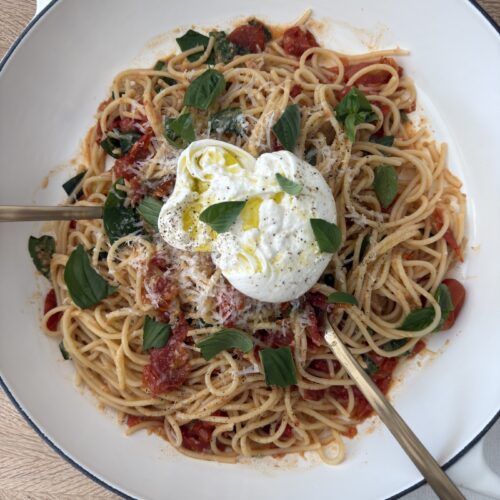


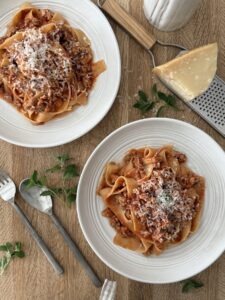
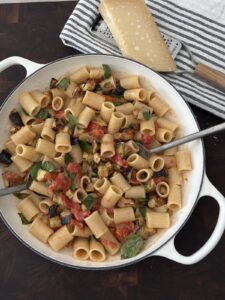
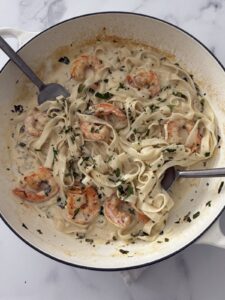
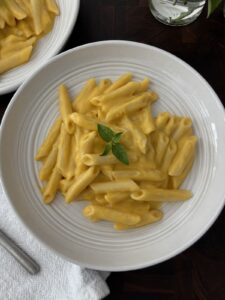
This was absolutely delicious and so easy!!! A fabulous Summer Pasta paired with a Great Italian White Wine was perfect last night out on our patio!
Another easy Delicious recipe!!
It was perfect for a Summer Night with great Italian White Wine out on our patio last night !!
That sounds like the perfect summer night! I’m so glad you enjoyed it — and I love the idea of pairing it with a crisp Italian white!
Thank you so much! I’m thrilled you loved the Burrata Pasta with Roasted tomato— and that wine pairing sounds perfect for a summer evening!